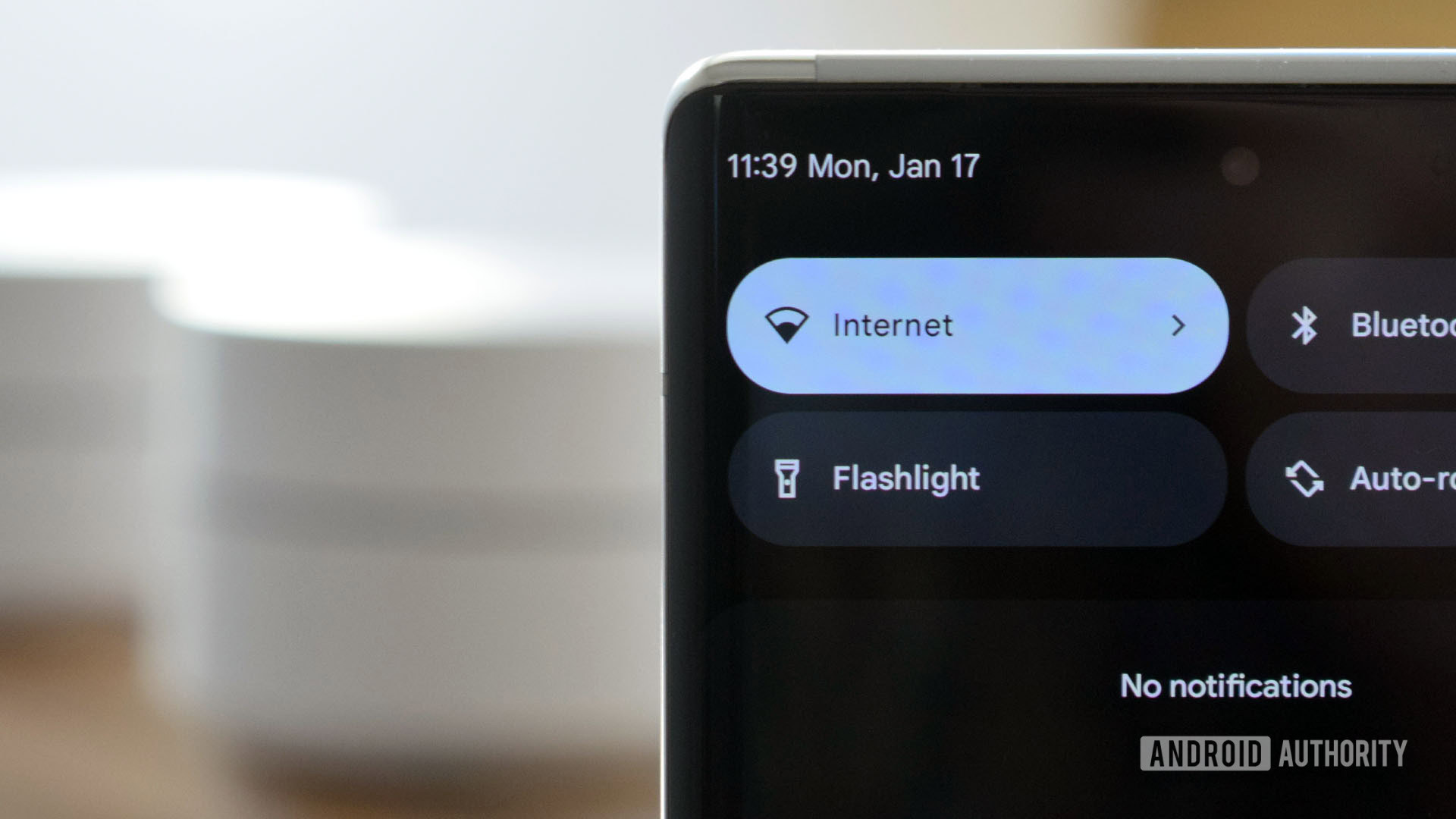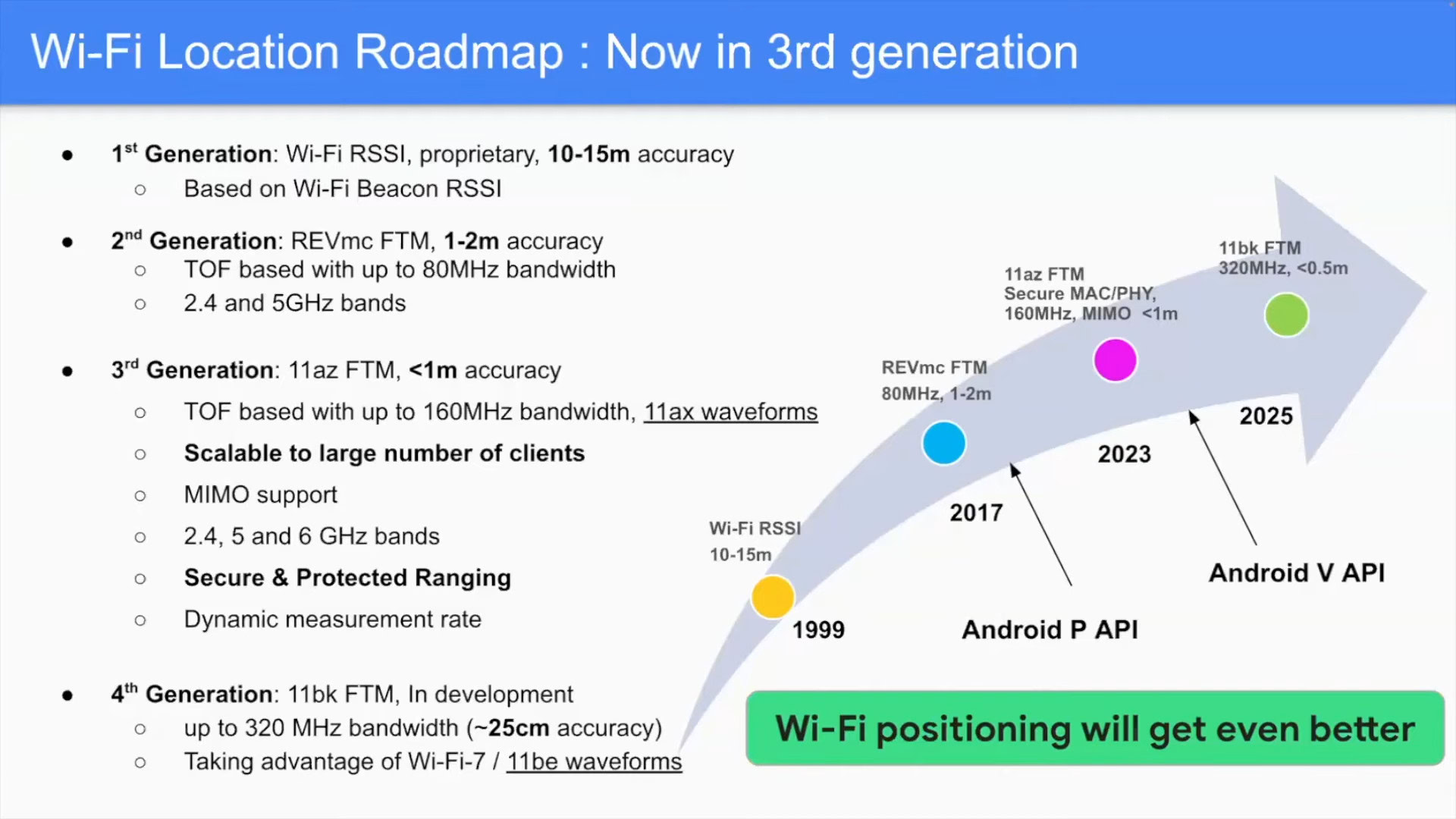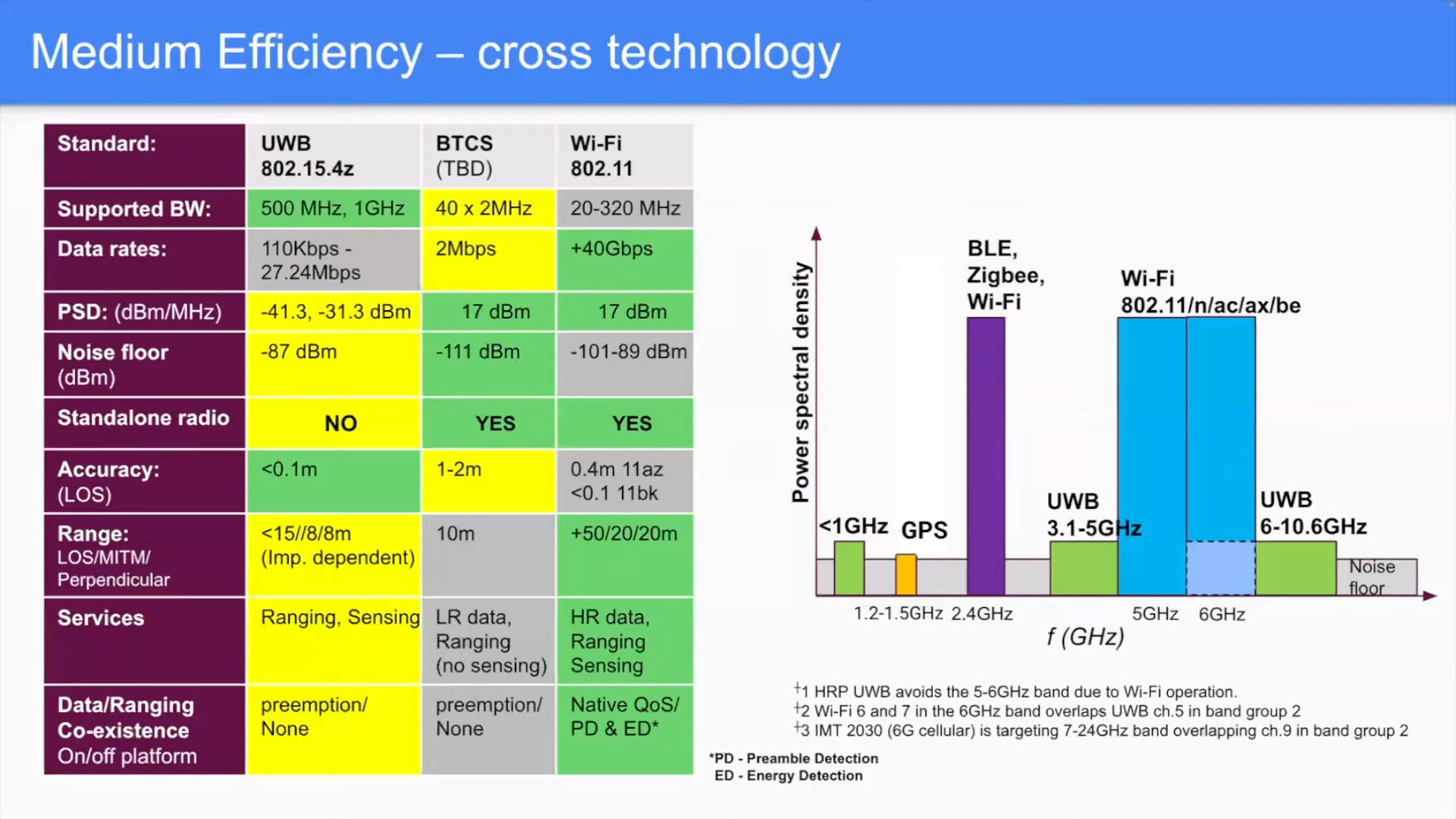Affiliate links on Android Authority may earn us a commission. Learn more.
Android 15 adds support for Wi-Fi Ranging to improve indoor navigation
Published onNovember 11, 2024

- Android 15 adds support for the IEEE 802.11az protocol, i.e. Wi-Fi Ranging.
- Wi-Fi Ranging is a positioning technology that enables indoor location tracking accuracy of less than 1m.
- This feature will only work on Android 15 devices with Wi-Fi chips that support Wi-Fi Ranging, though.
If you’ve ever tried to track your location indoors using GPS, then you’ll know how inaccurate it can be. You shouldn’t be surprised by that, though, since GPS positioning depends on your device receiving signals from multiple satellites orbiting the Earth, signals that can be obstructed by walls. Larger indoor spaces like convention centers or malls tend to have a ton of Wi-Fi access points, which can also be used to triangulate your device’s location. For the longest time, though, Wi-Fi-based positioning has been inaccurate due to how it worked. Fortunately, recent advancements have dramatically improved Wi-Fi location tracking and Android 15 is ready to bring these advancements to mobile devices.
You’re reading an Authority Insights story. Discover Authority Insights for more exclusive reports, app teardowns, leaks, and in-depth tech coverage you won’t find anywhere else.
When the Wi-Fi standard was originally created, there wasn’t a standard protocol for Wi-Fi-based location tracking. However, it was still possible to determine the approximate location of devices by measuring the received signal strength (RSS), i.e. the strength of the Wi-Fi signal, from multiple Wi-Fi access points (APs). Signal strength-based location tracking only offered 10-15m accuracy at best, however, making it unsuitable for precise indoor navigation.
Later, the IEEE Standards Association created the 802.11mc, or Wi-Fi Round Trip Time (RTT), standard to allow for more precise Wi-Fi-based positioning. This standard uses Fine Timing Measurement (FTM) to enable location tracking with 1-2m accuracy. Instead of relying on signal strength measurements, Wi-Fi RTT with FTM measures the time-of-flight (ToF) between an RF packet sent from your phone to several nearby APs. While Wi-Fi RTT with FTM worked over both the standard 2.4 and 5GHz bands, it was never widely deployed in the field, so you’ve probably never seen it in action.
Android actually added support for Wi-Fi RTT with the release of Android 9 in 2018, and many mobile devices today have Wi-Fi chips that support the positioning technology. Google even created a demo app to showcase Wi-Fi RTT with FTM, though because there aren’t many AP deployments that support it, you’ll have trouble finding a place to actually try it out in. Thankfully, Google created a demo video that shows how accurate indoor location tracking can be using Wi-Fi RTT with FTM.
While Wi-Fi RTT with FTM is already fairly accurate, the IEEE SA was able to improve upon it even further with the 802.11az standard, also known as Wi-Fi Ranging. Wi-Fi Ranging with FTM allows for <1m accuracy (down to 0.4m), so it’s even more accurate than Wi-Fi RTT with FTM. Not only that, but it uses double the bandwidth (160Mhz vs. 80MHz), supports the 6GHz band, is scalable to a large number of clients, is more secure and protected, and supports dynamic measurement rates.
The IEEE SA published the 802.11az standard in March 2023, making it too late to support in 2023’s Android 14 release. However, Google was able to add hardware abstraction layer (HAL) support for the standard in the second quarterly platform release of Android 14. The HAL APIs for Wi-Fi Ranging can be implemented by devices running Android 15 or later, as mentioned by Google in its documentation for Wi-Fi RTT. Devices that run Android 15 and implement HAL/firmware support for 802.11az enable apps that use Android’s Wi-Fi RTT API to take advantage of Wi-Fi Ranging. Google’s documentation for the API states that devices that support 802.11az will use the protocol when nearby APs support it, otherwise they’ll fall back to 802.11mc.
You might be wondering why you should care about Wi-Fi Ranging when UWB already exists and Bluetooth 6.0 with Channel Sounding is almost here. This lecture by Google engineer Dr. Roy Want offers a great breakdown of why Wi-Fi Ranging matters, but basically, Wi-Fi-based positioning has a lot of benefits over other positioning technologies. Wi-Fi-based positioning offers a superior link budget, has lots of available spectrum to meet growing demand, is compatible with previous generations of Wi-Fi, is scalable to a large number of clients, is adaptive to traffic conditions, is robust to multipath through MIMO, is secure, and is cost effective. Sure Wi-Fi Ranging is slightly less accurate than UWB and Bluetooth Channel Sounding, but it has better range than both.
The Android Location team within Google already envisions several ways that Wi-Fi Ranging can be used. For starters, it could enable retail apps to help you find your way to a product in a store. It could also be used to make smart home controls more contextual. For example, if you ask the assistant to turn on the lights, the app could automatically pinpoint what room you’re in to determine which lights to turn on.
Most Android phones don’t have hardware support for Wi-Fi Ranging just yet, but that’s set to change within a couple of years. Qualcomm’s new FastConnect 7900 connectivity chip supports Wi-Fi Ranging, for example, so any upcoming phones that use that chip will be ready. However, many Wi-Fi APs that support Wi-Fi 6 or later will need to receive a firmware update to support 802.11az, so even if your phone were to support it today, you’d need to wait to use it.


